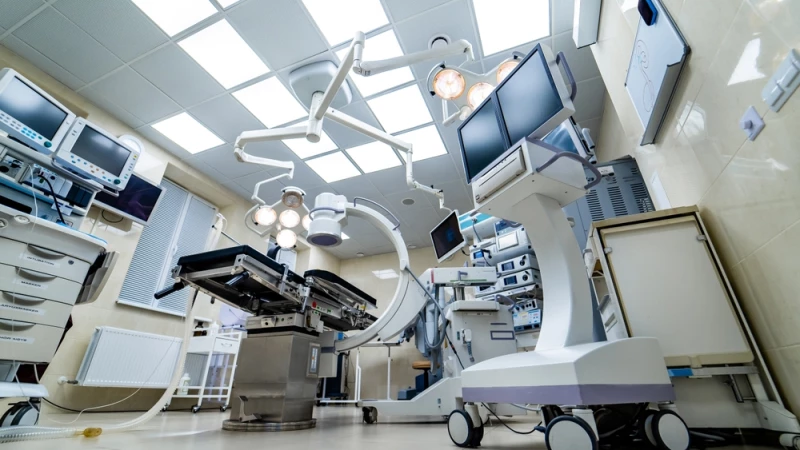Managing the lifecycles of medical devices in healthcare delivery organizations (HDOs) is essential for patient care, making this a top priority within healthcare technology management (HTM). But knowing that you can count on an infusion pump or heart monitor when it’s required for critical care is not only about knowing where a device is in its lifecycle or that preventive maintenance has recently been performed. It also requires a comprehensive cybersecurity approach that ensures a device is free of vulnerabilities and exposures that could lead to potential downtime in a critical moment of care.
Clinical engineers and healthcare security teams must work together to secure and protect network-connected medical devices (IoMT) and other cyber-physical systems (CPS) in the healthcare environment. Without strong cooperation between these teams, challenges can arise that make securing these devices difficult, like discrepancies in asset inventories, operating unsupported or legacy systems, or involvement in care delivery.
In taking protective measures, these are the most important cybersecurity considerations your organization can take in managing medical device lifecycles to protect and secure these critical devices.
1. Comprehensive Asset Visibility that Enables Operational Efficiency
Traditionally clinical engineering teams are responsible for maintaining the effective operation and uptime of medical devices. Beyond simply understanding how these devices are used in clinical workflows, ensuring effective cybersecurity requires having complete visibility into these devices and maintaining an up-to-date asset inventory. This ensures that all internet-connected devices are known and accounted for. In this regard, security and HTM teams must work together to ensure visibility is a top priority.
Another essential step in securing devices and maintaining clinical workflows is taking a cybersecurity approach that prioritizes operational efficiency and resiliency. This means using data from your environment to inform device lifecycle decisions and using this to improve the value these devices bring to operations. This requires a full understanding of how devices are being used, tracking location to support lifecycle functions, and leveraging accurate data to track ROI for lifecycle decisions, capital planning, and compliance.
To achieve full asset visibility and operational resiliency, clinical engineers and security teams benefit from a comprehensive cybersecurity solution that offers unparalleled discovery methods purpose-built for medical devices. And while many healthcare organizations rely on manual data collection to maintain an accurate inventory, having a streamlined solution can close any gaps and automate labor-intensive processes. By integrating directly with your CMMS or CMDB solution, the right asset inventory solution can automate updating device information so clinical engineers know the right work is being done on the proper device and all information, from operating system and model number to lifecycle and real-time location, are accurate.
2. Exposure Management with Operational Impact and Prioritization
Today many informational security teams in healthcare are overwhelmed by the number of vulnerabilities present in connected devices, and clinical engineers responsible for the operability and lifecycles of these devices need to be aware of possible vulnerabilities to avoid costly downtime. The consequences of an exploited vulnerability in a critical medical device while in the service of patient care can be dire, so taking a strategic approach to identifying, assessing, and remediating exposures is key.
Exposure management takes into consideration device type, operational impact should that device be exploited, and manufacturer guidance in recommended remediation strategies. This advanced approach goes far beyond traditional vulnerability management, which only relies on Know Exploited Vulnerabilities (KEVs) rather than more extensive industry guidance and a holistic view of your unique environment.
Alleviate the burden security teams face by adopting an exposure management strategy that provides advanced risk assessment and reporting capabilities that allow for team members to evaluate risk holistically and effectively act on recommended remediations. With clear remediation guidance and prioritization based on your overall risk profile and the impact of potential exploitations, you can see which medical devices are most at risk and act swiftly before exposures are exploited. Managing a device’s lifecycle with insights into possible risk of exposure and the impact in clinical workflows should that device be exploited can help both clinical engineers and information security teams secure and protect essential medical devices.
3. Purpose-built for Healthcare CPS
In considering cybersecurity solutions to protect medical devices, provide full visibility, and offer comprehensive exposure management, it’s important to remember that not all cybersecurity solutions are created equal. The traditional IT cybersecurity solutions that healthcare security teams leverage to protect patient data and IT systems are very different from solutions that are purpose-built to protect cyber-physical systems (CPS). CPS in healthcare environments are all the internet-connected devices that play a physical role in care and operations, from medical devices to operational technology (OT) in healthcare, like elevators and HVAC. IT cybersecurity solutions were not built to protect these assets that are highly sensitive, often built on legacy systems, and were not created with cybersecurity in mind.
To fully protect medical devices, it’s critical to employ a cybersecurity solution purpose-built for healthcare CPS. Take asset visibility, for example. IT solutions aren’t able to discover CPS assets because they lack the protocols to find these devices. But a solution built for CPS can safely query these devices in their native protocols using multiple discovery methods. Likewise with exposure management, a cybersecurity solution tailored to CPS is aware of known exposures specific to these devices and can provide invaluable information to protect your environment against risk.
Healthcare-Focused Cybersecurity to Protect Medical Device Lifecycles
Managing medical device lifecycles means staying on top of preventive maintenance, minimizing downtime, and ensuring that these critical devices are protected from cybersecurity threats. Applying cybersecurity best practices requires cooperation between clinical engineers and information security professionals. Ensuring your cybersecurity solution offers asset visibility that prioritizes operational resiliency, comprehensive exposure management, and is purpose-built for healthcare CPS is an essential step to managing medical devices.
Claroty xDome meets all three of these requirements and more. As the five-time winner of Best in KLAS for Healthcare IoT Security, Claroty is trusted by healthcare organizations for its dynamic discovery methods that are built specifically to offer full visibility into healthcare networks. By employing advanced exposure management that identifies, assesses, and prioritizes threats in order to offer remediation strategies that takes operational impact into consideration for your unique environment, Claroty xDome helps security teams streamline vulnerability and risk management.
To learn more about how Claroty xDome helps clinical engineers and information security teams protect and manage medical devices, talk to a member of our team.













